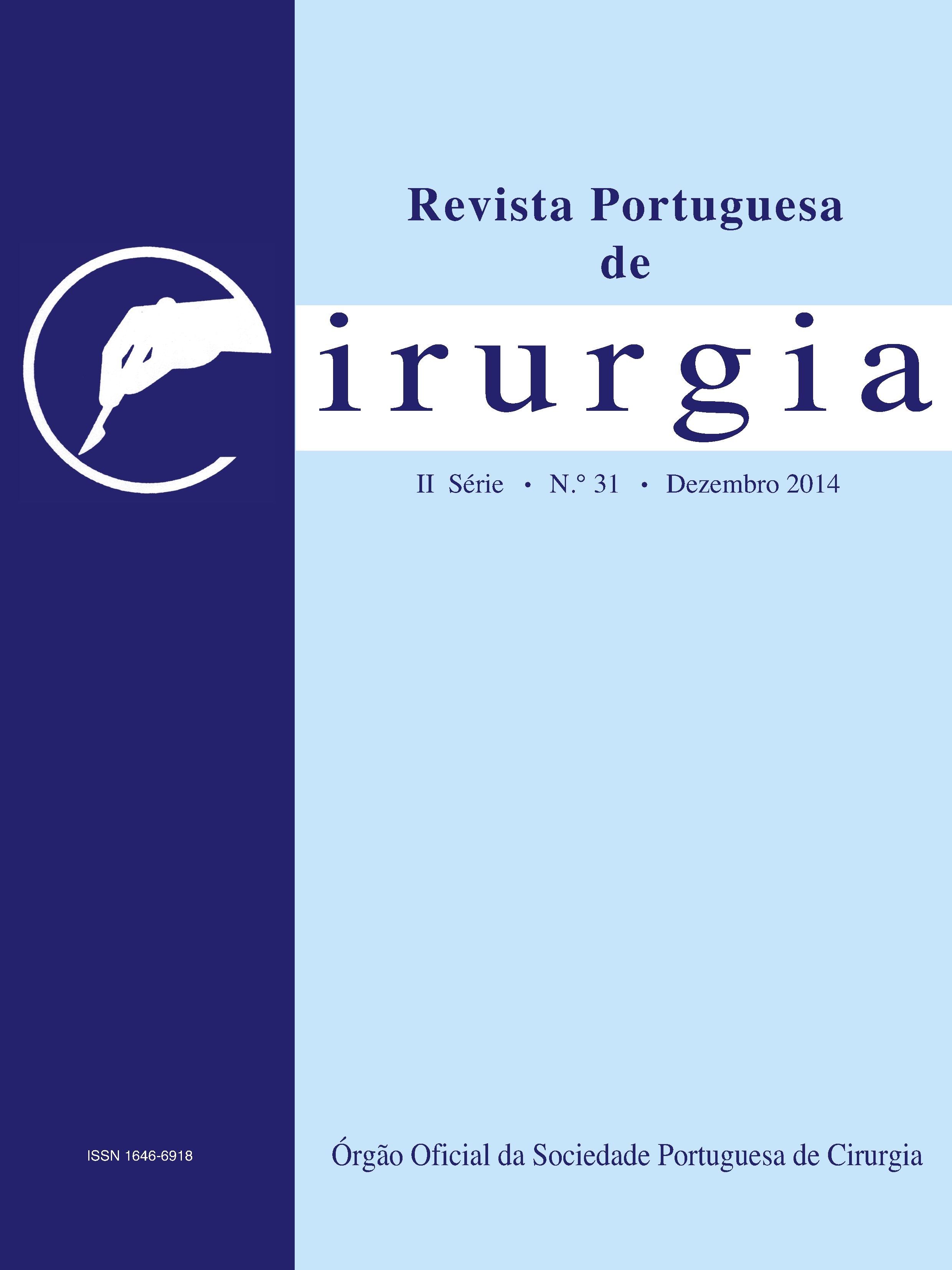Prevenção da Sépsis Pós-esplenectomia: criação de um protocolo de vacinação e educação do doente esplenectomizado.
Abstract
A sépsis pós-esplenectomia é uma entidade rara, mas está associada a uma elevada mortalidade, justificando a existência de várias medidas para a sua prevenção, nomeadamente o esquema de vacinação e as estratégias de educação dos doentes. A profilaxia antibiótica permanece não consensual. Para além de serem alvo de discussão e de existirem diferentes guidelines com recomendações diferentes, ainda se acrescenta o grave problema do seu incumprimento ou desconhecimento pela maioria dos médicos, havendo doentes sem qualquer medida preventiva. No panorama nacional, não existem quaisquer protocolos ou normas de orientação clínica sobre esta entidade, excepto uma referência breve no plano nacional de vacinação. Vimos propor um protocolo de vacinação e de educação para estes doentes.
Downloads
References
Di Sabatino A, Carsetti R, Corazza GR: Post-Splenectomy And Hyposplenic States. Lancet 2011; 378: 86-97
Okabayashi T, Hanazaki K: Overwhelming postsplenectomy infection syndrome in adults – A clinically preventable disease. World J Gastroenterol 2008; 14 (2): 176-9
Barron J, O’neal, John C, Mcdonald: The risk of Sepsis in the asplenic adult. Ann. Surg. 1981; 194(6): 775-8
Spealman D, Buttery A, Daley D et al: Guidelines for the prevention of sepsis in asplenic and hyposplenic patients. Internal Medicine Journal 2008; 38: 349-56
Kotsanas D, Al-Souffi MH, Waxman BB, King RWF, Polkinghorne KR, Woolley IJ: Adherence to guidelines for preventionof postsplenectomy sepsis. Age and sex are risk factors: a five-year retrospective review. Journal of surgery. 2006; 76: 542-7
Hegarty PK, Tan B, O’sullivan R, Cronin CC, Brady MP: Prevention os postslenectomy sepsis: how much do patients know? Hematol J. 2000; 1(5): 357-9
Melles DC, Marie S: Prevention of infections in hyposplenic and asplenic patients: an update. The Netherlands Journal of Medicine. 2004; 62(2)
Rufer A, Wuillemin WA: The spleen in non-mallignat haematological disorders. Ther Umsch. 2013; 70 (3): 157-62
Benoit S: Median and long-term complications of splenectomy. Ann Chir. 2000; 125(4): 317-24
Newland A: Preventing severe infection after splenectomy (Editorial). Br Med J. 2005; 331: 417-8
Menezes, MP: “Autotransplante do baço” (Tese de Mestrado). Repositório de Teses da Universidade da Beira Interior. 2009
Shatz DV: Vaccination practices among North American trauma surgeons in splenectomy for trauma. J Trauma. 2002; 53 (5): 950-6
Centers for Disease Control and Prevention: General Recommendations on Immunization. Recommendations of the Advisory Committee on Immunization Practices (ACIP). 2011
Pastemack M: Prevention of sepsis in the asplenic patient. UpToDate. 2012
Direcção Geral da Saúde - Divisão das Doenças transmissíveis: Plano Nacional de Vacinação. 2006
Davidson RN, Wall RA: Prevention and management of infections in patients without a spleen. Clin Microbial Infect. 2001; 7: 757-60
Shatz DV, Schinsky MF, Pais LB, Romero-Steiner S, Kirton OC, Carlone GM: Immune responses of splenectomized trauma patients to the 23-valent pneumococcal polysaccharide vaccine at 1 versus 7 versus 14 days after splenectomy. J Trauma. 1998; 44(5): 760-6
Schreiber MA, Pusateri AE, Veit BC, Smiley RA, Morrison CA, Harris RA: Timing of vaccination does not affect antibody response or survival after pneumococcal challenge in splenectomized rats. J Trauma. 1998; 45(4): 692-9
Shatz DV, Romero-Steiner S, Elie CM, Holder PF, Carlone GM: Antibody responses in postsplenectomy trauma patients receiving the 23-valent pneumococcal polysaccharide vaccine at 14 versus 28 days postoperatively. J Trauma. 2002; 53(6): 1037-42
INFARMED – Autoridade Nacional do Medicamento e Produtos de Saúde/ Ministério da Saúde: Prontuário Terapêutico 2013. 2012
Dahyot-Fizelier C, Mimoz O: Gestion du patient splénectomisé. Société Française d’Anesthesie et de Réanimation. 2010
Jones P, Leder K, Woolley I, Cameron P Cheng A, Spelman D: Postsplenectomy infection – strategies for prevention in general practice. Aust Fam Physician. 2010; 39(6): 383-6
Downloads
Published
Issue
Section
License
Para permitir ao editor a disseminação do trabalho do(s) autor(es) na sua máxima extensão, o(s) autor(es) deverá(ão) assinar uma Declaração de Cedência dos Direitos de Propriedade (Copyright). O acordo de transferência, (Transfer Agreement), transfere a propriedade do artigo do(s) autor(es) para a Sociedade Portuguesa de Cirurgia.
Se o artigo contiver extractos (incluindo ilustrações) de, ou for baseado no todo ou em parte em outros trabalhos com copyright (incluindo, para evitar dúvidas, material de fontes online ou de intranet), o(s) autor(es) tem(êm) de obter, dos proprietários dos respectivos copyrights, autorização escrita para reprodução desses extractos do(s) artigo(s) em todos os territórios e edições e em todos os meios de expressão e línguas. Todas os formulários de autorização devem ser fornecidos aos editores quando da entrega do artigo.



